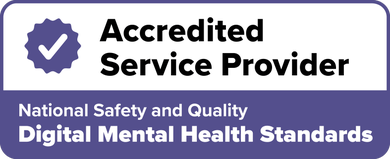ADHD symptoms in women
In a Nutshell
ADHD often looks different in women, usually showing up as disorganisation, emotional overwhelm, and mental fatigue rather than hyperactivity.
Many women with ADHD remain undiagnosed for years due to subtle symptoms, misdiagnosis, or masking behaviours.
Hormonal changes during menstruation, pregnancy, and menopause can make ADHD symptoms more difficult to manage.
A mix of lifestyle strategies, therapy, self-compassion, and sometimes medical support can help you reduce symptoms and better manage your day-to-day life.
If you've often felt scattered, overwhelmed by everyday tasks, or emotionally reactive in ways you can't explain, you're not imagining it. Many women with ADHD live with a constant sense of mental clutter and self-doubt.
Their symptoms often slip through the cracks because they don’t match the stereotype of the “hyperactive schoolboy” often associated with ADHD.
Research and diagnostic tools have traditionally centred on men and children. As a result, women are more likely to be misdiagnosed with anxiety or depression, or simply told to try harder. Yet, in some cases, the real issue may be neurological rather than motivational.
In this resource, we’ll explore how ADHD usually shows up in women, how hormones come into play, and what kinds of support can help make life feel less chaotic.
How ADHD symptoms show up differently in women
Women with ADHD tend to experience more internalised symptoms than men. That might mean constant worry, disorganisation, or intense emotional swings rather than the disruptive behaviour that easily gets noticed in classrooms or workplaces.
Many women become experts at masking. They develop complex coping strategies to hide their struggles, often at the cost of their mental health. They might overachieve in one area while secretly falling apart in another.
This is sometimes referred to as being "high-functioning," but in reality, it often means silently suffering while appearing outwardly competent.
Social expectations also play a role. Girls are often taught to be quiet, obedient, and emotionally attuned, which can make ADHD in girls harder to spot early in life.
Related: How to get an ADHD diagnosis?
Common ADHD symptoms in women at different life stages
In childhood and adolescence
Forgetting homework or losing school items
Zoning out in class or daydreaming
Struggling to finish tasks, especially those that feel boring
Internal restlessness or fidgetin
Oversensitivity to rejection or criticism
Social difficulties, like feelingout of sync with peers
In adulthood (20s to 40s)
Chronic disorganisation at home or work
Difficulty managing time, plans, or routines
Intense periods of overfocus followed by burnout
Emotional ups and downs, often tied to stress or criticism
Feeling overwhelmed by seemingly simple decisions (also called ADHD paralysis)
Poor money management or impulse spendin
Relationship tension due to forgetfulness or poor emotional regulation
In midlife and beyond (40s+)
Worsening forgetfulness and brain fog
Increased irritability or anxiety, often linked to hormonal changes
Difficulty multitasking or managing household responsibilities
Fatigue from years of masking or overcompensating
Struggling to remember names, appointments, or commitments
The emotional toll of living undiagnosed
For women with ADHD, the weight of daily life often comes with deep emotional costs. Many describe guilt for thinking they were just laz or broken, even when they’re trying harder than anyone around them
This internalised frustration can lead to chronic anxiety, depression, and low self-esteem.
Years of masking or failing to meet expectations can create a deep sense of shame. It’s not uncommon to experience emotional dysregulation, where a small comment or setback triggers intense sadness, anger, or embarrassment.
These emotional challenges often go hand-in-hand with the physical effects of stress, such as headaches, insomnia, or digestive issues. For some women, untreated ADHD contributes to disordered eating, compulsive behaviours, or burnout.
Hormones and ADHD: What's the connection?
Oestrogen plays a big role in regulating neurotransmitters like dopamine and norepinephrine, both of which affect attention and mood.
That means ADHD symptoms can fluctuate with hormonal changes throughout a woman’s life.
During the menstrual cycle, symptoms may worsen in the days before a period.
In pregnancy, some women find temporary relief due to higher oestrogen levels.
After childbirth, a sudden hormone drop can trigger mood swings or worsened focus.
During perimenopause and menopause, declining oestrogen may intensify symptoms such as brain fog, irritability, and forgetfulness.
Tracking your cycle, practising grounding techniques, and working with a knowledgeable ADHD therapist can help manage these shifts.
Diagnosis, lifestyle support, and therapy
Step one: recognising the signs
If the ADHD symptoms we’ve talked about hit too close to home, it’s worth talking to a GP or ADHD therapist about assessment options. Some questions to also reflect on are:
Do you often feel overwhelmed by daily tasks?
Do you lose track of time or forget commitments?
Do you struggle to manage your emotions or switch tasks?
Are you constantly juggling but rarely finishing tasks?
Step two: seeking a diagnosis
In Australia, diagnosis typically involves a clinical psychologist or psychiatrist. You’ll likely be asked about:
Childhood behaviours
Current daily functioning
Family history
Emotional and behavioural symptoms
There’s no single test, but a combination of interviews, checklists, and cognitive assessments will help form a diagnosis.
Step three: finding your support team
The appropriate support will look different for different people. And what you need now will likely be different from what you will need a few years after getting some kind of help.
It would be helpful to familiarise yourself with the different supports available, but it’s ultimately your psychologist or therapist who can recommend what’s best for you.
Cognitive behavioural therapy (CBT) for emotion regulation and mindset shift
Coaching or executive function support for planning and productivity
Mindfulness and grounding techniques to reduce overwhelm and increase focus
Medication, such as stimulants or non-stimulants, tailored to your needs
Peer support groups, especially for women with ADHD
Final thoughts
If you've always felt like you're falling short, misjudged, or trying harder than others just to get through the day, there's value in exploring why.
ADHD in women often goes undetected, but once recognised, it becomes much easier to work with rather than against your brain.
Diagnosis isn’t a label but a lens that can help you make sense of your patterns, pain points, and strengths. With the right support, you can start to untangle the mental clutter, build sustainable systems, and live with more confidence and ease.
Get Help
Overcome your adhd and book a free online consultation with one of our top rated therapists
Essential Reading about ADHD
Free Mental Health Tests
Frequently Asked Questions
You can connect with a qualified ADHD therapist through Talked, where many professionals specialise in supporting women with ADHD. You can also ask your GP for a referral or search directories like the Australian Psychological Society.
Yes. Hormones like oestrogen influence brain chemicals that affect focus and mood. Women often notice symptom changes during their menstrual cycle, pregnancy, or menopause.
Yes. Many women with ADHD are high-functioning, which means they appear successful or organised but are masking significant internal struggles. This can delay diagnosis and increase emotional exhaustion.
Mindfulness can improve attention, reduce reactivity, and help manage stress. For women with ADHD, techniques like breathwork, guided meditation, and body scanning can be especially grounding during moments of overwhelm.
ADHD paralysis is a state where someone feels mentally frozen and unable to start tasks, even small ones. It’s common in women with ADHD and is often linked to emotional overload or poor executive function.
ADHD Therapists Available Now
VIC
Psychologist
Hi, I am Melissa, a trauma-informed psychologist with experience supporting individuals through mental health challenges, trauma, and managing neurodiversity. My approach...More
NSW
Psychologist
Hi, my name is Jimmy and I've been practising for about 7 years. I have worked almost my entire career in private practice, but before that I worked at Headspace and as R...More
WA
Psychologist
Hi! I am passionate about self-knowledge and self-acceptance, and the constructive and creative power and peace that rests within this knowledge. I work from a trauma-inf...More








